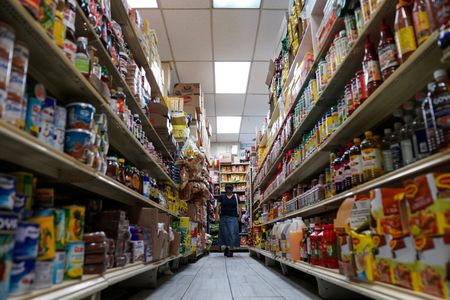
(Reuters) – With U.S. inflation well above the Federal Reserve’s 2% goal and a labor market that’s still very tight, most of the central bank’s policymakers expect they will need to raise interest rates at least twice more by year’s end, Fed Chair Jerome Powell said on Thursday.
In remarks prepared for delivery to a Banco de Espana conference on financial stability in Madrid that largely echoed his recent observations on the economy and the state of policy, Powell did not say when those rates hikes may come.
He noted, as he has, that banking stresses that emerged in March “may well lead” to more tightening in credit conditions than would be expected from rate hikes alone. But he also made note of still too-high inflation, and the “long way to go” before inflation can be returned to the Fed’s 2% goal.
After 10 straight rate hikes since March 2022, the Fed’s policy-setting Federal Open Market Committee earlier this month opted to leave its policy rate unchanged at the 5%-5.25% range.
“We made this decision in light of the distance we have come in tightening policy, the uncertain lags in monetary policy, and the potential headwinds from credit tightening,” Powell said.
At the same time, he said, “a strong majority of Committee participants expect that it will be appropriate to raise interest rates two or more times by the end of the year.”
The Fed will hold four more policy meetings this year, with the next one on July 25-26.
Rate hikes to date have slowed business investment and the housing sector, where activity is far below its peak last year even as some indicators have recently turned up, Powell said.
“It will take time” for the rest of the economy to feel the full impact of rate hikes to date, he said.
That’s especially so for inflation, which by the Fed’s preferred gauge — the personal consumption expenditure index – is estimated to have risen 3.9% last month from a year earlier, with the core index, excluding food and energy prices, likely to have risen 4.7%, Powell said.
The official figures for May will be released on Friday. If those estimates prove out, it would show a lack of progress on underlying price pressures for the last six months.
(Reporting by Ann Saphir; Editing by Leslie Adler)
